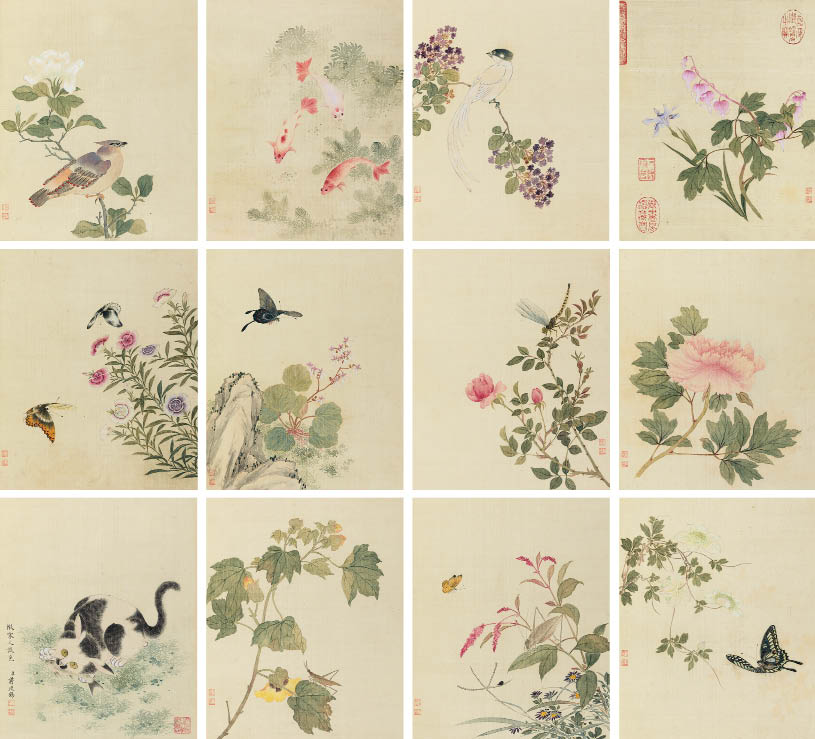Court Painter Jiang Tingxi
 |
| Painting Album by Jiang Tingxi: Colored Paintings After Song Masters. |
JIANG Tingxi (1669-1732) is to many synonymous with his capacity as royal painter. Adept at various styles, and also proficient in calligraphy, many of Jiang’s works were tributes to the emperor. That he would sign them with the name officials adopted when addressing their lord perhaps explains why he is thought of as a “royal painter.” Jiang was also a distinguished scholar, however, having excelled in the imperial examinations, whose purpose was to select candidates for court posts. He forged a successful political career in the Qing Dynasty imperial court.
Two albums (12mo, 285 x 290 mm) of Jiang’s works, both of which emulated the Song Dynasty (960-1279) masters, appeared at the China Guardian auctions in 2012. All are listed in the prestigious Shiqubaoji – Qing imperial family collection – compiled in 1745 along with other outstanding works by prominent artists of the time. The two albums of paintings fetched RMB 47.15 million – a new record for Jiang’s works.
One album is a compilation of 12 ink-and-wash flower paintings; the other comprises a dozen elaborately outlined and lavishly colored pieces that feature flowers, birds, goldfish and insects.
The customary stamps on the albums of their previous owners show them all to have been Qing Dynasty rulers, including emperors Kangxi (1654-1722), Yongzheng (1678-1735), Qianlong (1711-1799) and Jiaqing (1760-1820). During the Daoguang (1782-1850) and Xianfeng (1831-1861) reigns they were awarded to Prince Zaiquan. They then came into the possession of Wu Puxin, an official during the late Qing Dynasty and business tycoon. More recently the albums were purchased by an overseas collector, and remained hidden from public sight until last year.
A native of Changshu in southeastern Jiangsu Province, Jiang Tingxi held senior positions in the Qing court ranging from vice minister of rites and minister of revenues to mentor of the crown prince. He reveled in painting, in particular the flower and bird genre. Proficient in both ink-and-wash and colored inks, Jiang executed the former in a comparatively constrained style, while the latter were splendid and exuberant. The two styles reflect his roles as a scholar of refined taste and lofty aspirations on the one hand, and a magnate living a life of affluence and privilege on the other.
The paintings Jiang signed in dedication to the emperor are relatively big, with regal themes imbuing auspicious significations. Imperially appointed artists were generally commissioned with such works.
The Zhonghua Book Company published the album of Jiang Tingxi’s flower paintings in 1919, and the Wenming Book Company the collection of his paintings of flowers, birds and insects in 1930. Today his Bamboo and Rocks is part of the National Art Museum of China collection in Beijing, and his Flowers of the collection of the Nanjing Museum in Jiangsu Province. Jiang’s paintings can also be seen in the National Palace Museum in Taipei.
Jiang Tingxi was also a gifted poet and writer. The five extant anthologies of his poems reveal the author’s understanding of nature and life. Jiang also collated and recompiled the colossal 5,020-volume state-sponsored encyclopedia Gujin Tushu Jicheng, or Completed Collection of Graphs and Writings of Ancient and Modern Times during the rule of Emperor Yongzheng.

